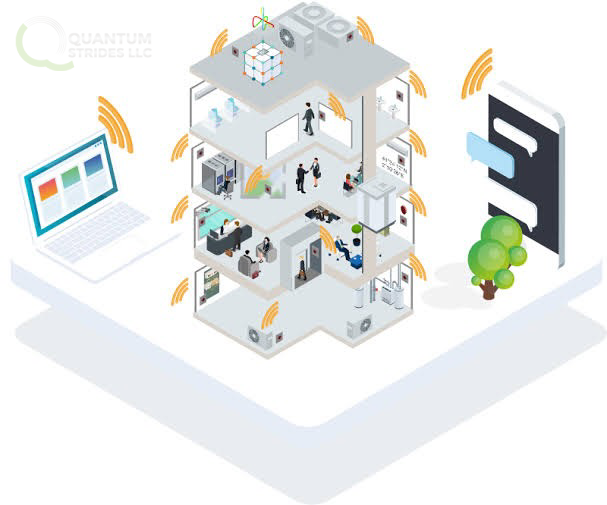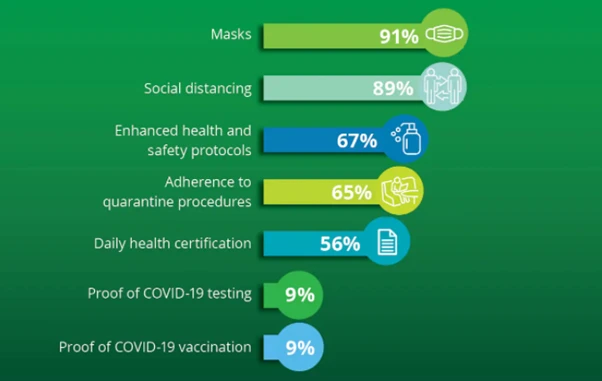Returning to Work: Learn how Integrated Workplace Management System can play a significant role
Returning to Work: Learn how Integrated Workplace Management System can play a significant role

It has been arduous for businesses to navigate securely through the pandemic. As we are entering the post-pandemic phase, companies have begun proactively looking for the best ways to bounce back to normalcy alongside ensuring the safety of employees.
Organizations are typically focusing on managing their facilities in a way such as to prevent COVID-19 outbreaks even after they have employees working from the office. Therefore, companies are looking for long-term, foundational technologies that protect worker safety and facilitate efficient workplace management. This will, in turn, pave the way for resilient and agile ways of operating businesses.
Most companies typically fall under any one of the following three scenarios. They have:
- Enough corporate space to ensure adherence to safety protocols
- Concerns due to insufficient hoteling options
- Opted for a 1:1 assigned seating environment
- Problems with shifting employees to an unassigned seating arrangement
Importantly, when you are planning for your employees to return to work, you should try to offer your employees the ability to reserve individual seating, workspaces, or conference rooms. This should include a floor plan, including the number of seats available, and the floor’s total capacity to help employees plan their return.
With this kind of space management approach coming into the picture, it becomes important for you to embrace technological innovations for ease of use. Let’s delve deeper into how this can be done.
A survey conducted by Deloitte states that the following safety measures, as shown below, are a top priority for employers when they plan their workplace management strategy in this post-pandemic phase.

What are the primary challenges when considering returning to work?
To begin with, let’s understand the different types of risks and challenges your organization may face when planning a full-fledged return to work strategy.
1. Safety Of Employees
Ensuring the safety of employees is pivotal when you plan your return-to-work strategy. Your employees deserve a safe working environment that adheres to safety protocols needed to remain in line with the new normal. This includes social distancing, wearing masks, and providing sanitizers to the employees.
Moreover, easy accessibility and proper awareness about the available options will facilitate the return of your employees seamlessly.
2. Maintenance Of Facilities
You may have temporarily closed or even shut down a few of your facilities. With your employees returning to work, you need to consider a thorough cleanup of the workspaces. This will essentially include restoring and replenishing personal protective equipment (PPE) across your physical facilities. This particular initiative may need new strategies and technical capabilities to overcome logistical challenges.
3. Appropriate Space Planning And Management
You should note that a hybrid working model with a portion of your workforce placed remotely and the other operating from the office has become the trend today. Therefore, you will need to ensure social distancing norms and other safety measures for the employees working from the office. The tough part is, you should be able to facilitate seamless operations while ensuring minimum wastage of resources and space. This will indeed be a delicate balancing act.
Having said that, how can these concerns be taken charge of? A state-of-the-art Integrated Workplace Management System (IWMS) can help you decode the complexities. Check out how?
An Integrated Workplace Management System supports business to efficiently handle real estate management, asset and maintenance planning, space and facilities management, and sustainability management among others. It ensures quality management of data derived from different sources, helps maintain compliance and supports improved monitoring and control.
While you prepare to welcome your employees back to the office, IWMS can help in:
- Monitoring the occupancy of physical spaces to support new capacity policies
- Creating space plans to ensure adherence to social distancing
- Enabling reservable spaces to book in advance
- Facilitating workplace services for employees where and when they need them
- Managing new facilities cleaning and maintenance projects
- Tracking inventory by location for critical supplies
What are the specific capabilities of IWMS that can support a frictionless return to work?
A. Comprehensive Maps And Wayfinding
Wayfinding and comprehensive maps offer unparalleled floorplan visibility. This is significant because it will help employees physically navigate through re-designed workspaces effortlessly.
IWMS is empowered by next-gen wayfinding ESRI ArcGIS. This technological innovation enables your employees:
- To have a premium Locate app
- Experience and benefit from responsive designs for mobile and desktop with interactive indoor/outdoor maps for campus/building/workplace facilities
- Easily benefit from wayfinding and navigating through the facility to reserve rooms and find people.
B. Space Planning And Reservation
An appropriate space plan can help in maintaining a workplace that is safe, productive, and efficient.
Space planning and reservation capability within IWMS support the following:
- Automated creation of building, floor, and space records
- Helps automatic extraction of room boundaries
- Enables define space area measurements through area plans
- Allows assign space area classifications
This kind of dynamic space planning helps stakeholders:
- Create scenarios to graphically analyze floors for social distancing
- Update space classifications
- Rearrange seat arrangements
- Rearrange organizational allocations
- Designate spaces as reservable or dedicated
Furthermore, dynamic space planning offers a near real-time dashboard with density heatmapping to manage occupancy against limited capacity thresholds. This helps identify areas of overcrowding. Also, utilization insights workspaces enable effective management of allocated spaces, proactive identification of opportunities, and enhanced schedule-based sharing.
C. Automation Of Work Orders
Facilities management works in unison with space management. For example, if “employee A” has booked his workspace on a particular day, it is important that the seat be duly sanitized and cleaned, making it comfortable and safe for the employee to return to work. Similarly, there may be several other employees sharing workspaces at different points in time. Managing workspaces manually may become difficult. IWMS allows the generation of automated work orders. This way, workspace-related requests can be managed effectively through facilities management as a part of IWMS.
Wrap Up
Managing workspaces has become a major cause of concern among businesses with employees returning to work in a phased manner. Space and facilities management capabilities as a part of IWMS can play a pivotal role in planning your space strategy while ensuring to maintain safety measures, regulatory compliance, and the comfort of employees.
Quantum Strides as Your Go-to Partner for Integrated Workplace Management Solutions.
Quantum Strides is the frontrunner and connoisseur in the IWMS implementation, upgrade, performance tuning and enhancements, and the support arena.
We are experts in decoding complexities and offering the most simplified solutions best suitable for your organization. To add on, we specialize in delivering Integrated Workplace Management solutions empowered by IBM TRIRIGA and Nuvolo.
To know more about our offerings and solutions, feel free to check out our website and reach out to us for further clarifications. You may also drop us an email at iwms@quantumstrides.com
Comments
Post a Comment